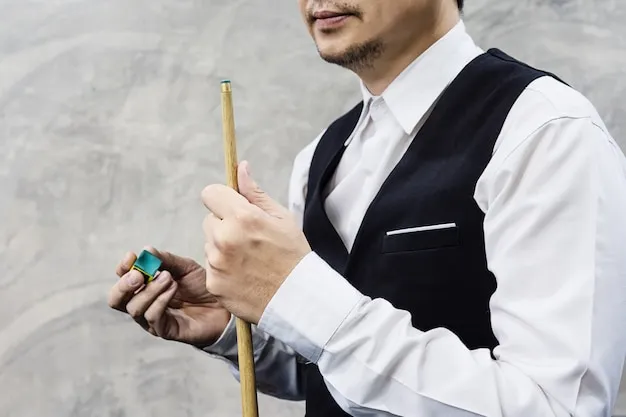Do different cue sports have different weight preferences?
Introduction
Cue sports encompass various games such as billiards, snooker, and pool, each with its own unique characteristics and preferences when it comes to cue weight. In this article, we will delve into the importance of cue weight in different cue sports, the factors that affect weight preferences, and the impact of cue weight on players’ performance. Let’s explore the intricacies of cue sports and their equipment.
Weight in Cue Sports:
Importance of cue weight in different games
While it may seem insignificant to some, cue weight plays a crucial role in cue sports. In billiards, snooker, and pool, the weight of the cue can greatly influence a player’s overall performance. The weight determines how the cue reacts when striking the cue ball, affecting both accuracy and power. Players often develop a preference for a specific weight range that suits their playing style.
Factors affecting weight preference
Numerous factors contribute to a player’s weight preference in cue sports. Firstly, personal preference and comfort level play a significant role. Some players may feel more in control with a heavier cue, while others may prefer the agility and finesse offered by a lighter one. Moreover, the length of the cue and the player’s physique can also influence weight preferences. A taller player with an extended reach may opt for a slightly lighter cue to maintain better control.
Different Cue Sports:
Billiards, snooker, pool, and their preferences
Billiards, snooker, and pool are distinct cue sports, each with its own set of rules and preferences regarding cue weight. In billiards, where precision and finesse are paramount, cues typically have a lighter weight, ranging from 16 to 19 ounces. On the other hand, snooker cues tend to be slightly heavier, weighing between 18 and 21 ounces. This weight range allows snooker players to generate more power while maintaining accuracy. Pool cues, known for the versatility required in different variations of the game, generally fall within the range of 17 to 21 ounces, catering to a range of playing styles.
Unique characteristics of each game’s cues
The cues used in billiards, snooker, and pool differ not only in weight but also in other characteristics. Billiards cues often feature a slimmer design to offer enhanced control for delicate shots. Snooker cues, on the other hand, tend to have a narrower tip, allowing players to manipulate the cue ball with precision. Pool cues, designed for a more robust style of play, often have a thicker tip and a sturdier construction to withstand repeated impact.
Player Preference:
How individual players adapt to cue weight
One fascinating aspect of cue sports is how players adapt to cue weight to suit their playing style. Some players may gravitate towards a heavier cue to generate more power and achieve a greater break, while others might prefer a lighter cue for increased control and finesse. Adaptation and experimentation with different cue weights are key as players strive to find their perfect match.
Influence of playing style on weight choice
A player’s unique playing style can heavily influence their weight preference. Aggressive players who prefer a powerful break and long shots may opt for a heavier cue to maximize their impact on the cue ball. Conversely, players who rely on finesse, precise positioning, and delicate shots often lean towards a lighter cue for improved control and subtly nuanced shots. Ultimately, the choice of cue weight is a deeply personal decision that varies from player to player.
Technical Considerations:
Impact of cue ball control and power
Cue weight directly impacts a player’s ability to control the cue ball and generate power. Heavier cues can provide more force, enabling players to break more effectively and achieve greater cue ball action. However, lighter cues offer enhanced control and finesse, allowing for delicate positional play. Striking the right balance between power and control is essential in cue sports, and cue weight plays a pivotal role in achieving this equilibrium.
Relation between cue weight and accuracy
The relationship between cue weight and accuracy is an intricate one. While some players argue that a heavier cue provides better stability and helps maintain a straighter stroke, others find that a lighter cue allows them to generate more accuracy and precision. As with many aspects of cue sports, finding the right balance between personal preference and technical considerations is crucial for optimal performance.
Cultural and Regional Variances:
Influence of regional cues on weight preference
Cultural and regional influences can shape weight preferences in cue sports. In regions where a particular cue sport is highly popular, players may adopt weight preferences that align with the prevailing trends and traditions of that area. Local cues might also dictate weight preferences as they are designed to cater to the playing style and preferences of players within that region.
Historical factors shaping weight preferences
Historical factors can also shape weight preferences in cue sports. Over time, cues have evolved, and weight preferences have shifted in response to changes in playing styles, rules, and equipment advancements. Furthermore, the influence of renowned players and their preferred cue weights can leave long-lasting impacts on the overall preferences of the cue sports community.
Conclusion:
Different cue sports indeed have varying weight preferences. Whether it’s the delicate finesse required in billiards, the precision of snooker, or the versatility demanded in pool, cue weight is a critical factor that affects a player’s performance. Personal preference, playing style, and technical considerations all play vital roles in determining the ideal weight for each player. As you embark on your cue sports journey, take the time to explore and experiment with weights to find the perfect cue that complements your unique playstyle.



